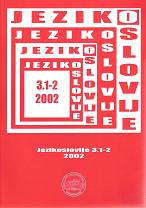Cognitive operations and projection spaces
Cognitive operations and projection spaces
Author(s): Sandra Peña Cervel, Francisco Ruiz de MendozaSubject(s): Language and Literature Studies
Published by: Filozofski fakultet, Sveučilište Josipa Jurja Strossmayera, Osijek
Keywords: mental space; blend; emergent structure; input space; conceptual projection; integration; cognitive operations; projection space
Summary/Abstract: In recent years, Mark Turner and Gilles Fauconnier have popularized the theory of blending (or conceptual integration) as a widespread cognitive mechanism which applies over many areas of conceptualization, including metaphor and metonymy. According to this theory, the understanding of some metaphorical expressions involves the activation of, at least, four different mental spaces: two input spaces (i.e. a source and a target space), a generic space, and a blend. Turner & Fauconnier contend that in this process emergent structure may be created which is not present in any of the input spaces. Emergent structure is the result of a number of potential irregularities in the mapping process, such as the existence of asymmetries and non-correspondences between source and target. The present paper examines Turner & Fauconnier’s proposal carefully and argues that there are no irregularities in conceptual projection. In our view, purported irregularities are only apparent and may be explained away in terms of the activation and principled combination of partial source and target inputs which are projected and integrated into single composite source and target spaces. These composite spaces have all the structure necessary for the metaphorical cross-domain mapping to take place in such a way that there are no non-correspondences or asymmetries between source and target. We also argue that the default interpretation of expressions involving conceptual projection and integration is a matter of the activity of any of a number of cognitive operations such as correlation, contrast, domain expansion, domain reduction, strengthening, mitigation, saturation, and counterfactual reasoning. Finally, in our alternative account, there is a projection space that is constructed on the basis of the conceptual structure resulting from such operations. This space is available for additional implicative operations that are often needed to derive the ultimate value of expressions in context.
Journal: Jezikoslovlje
- Issue Year: III/2002
- Issue No: 1+2
- Page Range: 131-158
- Page Count: 28
- Language: English

